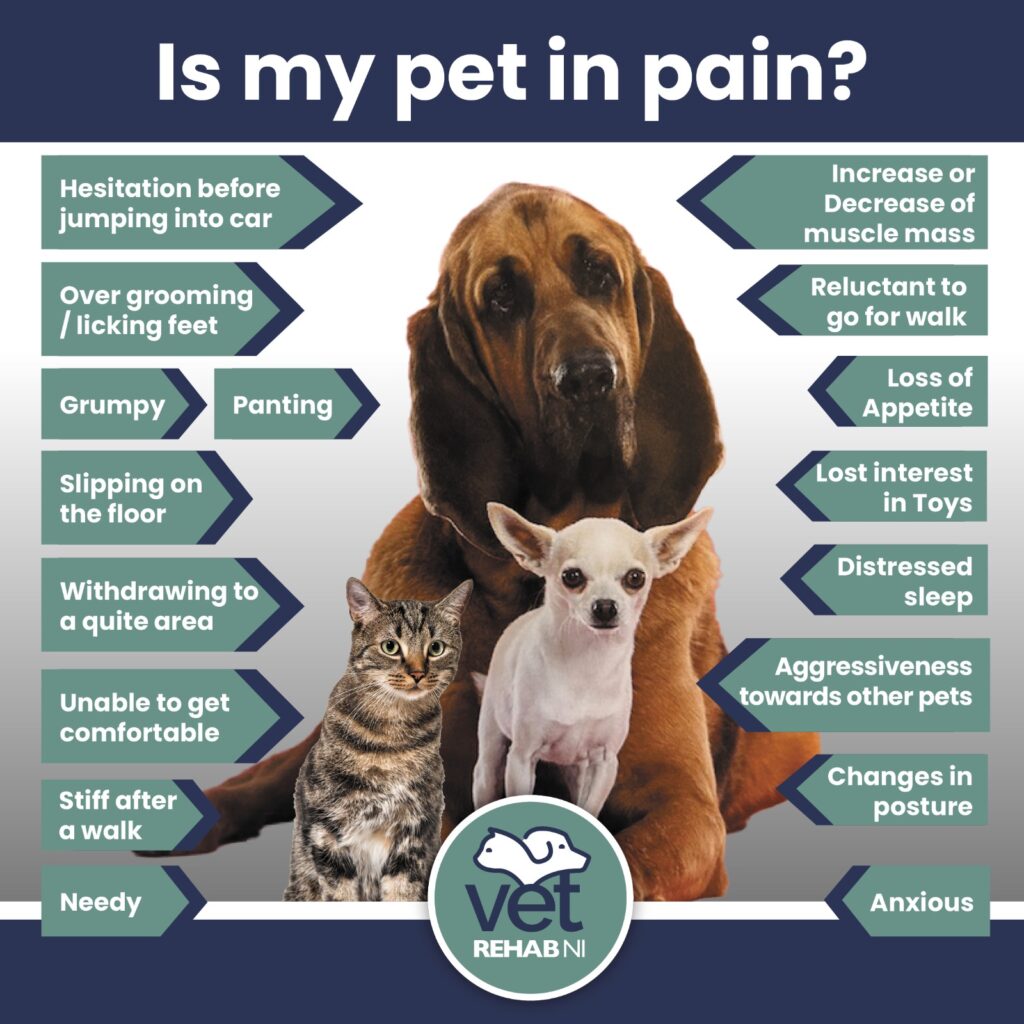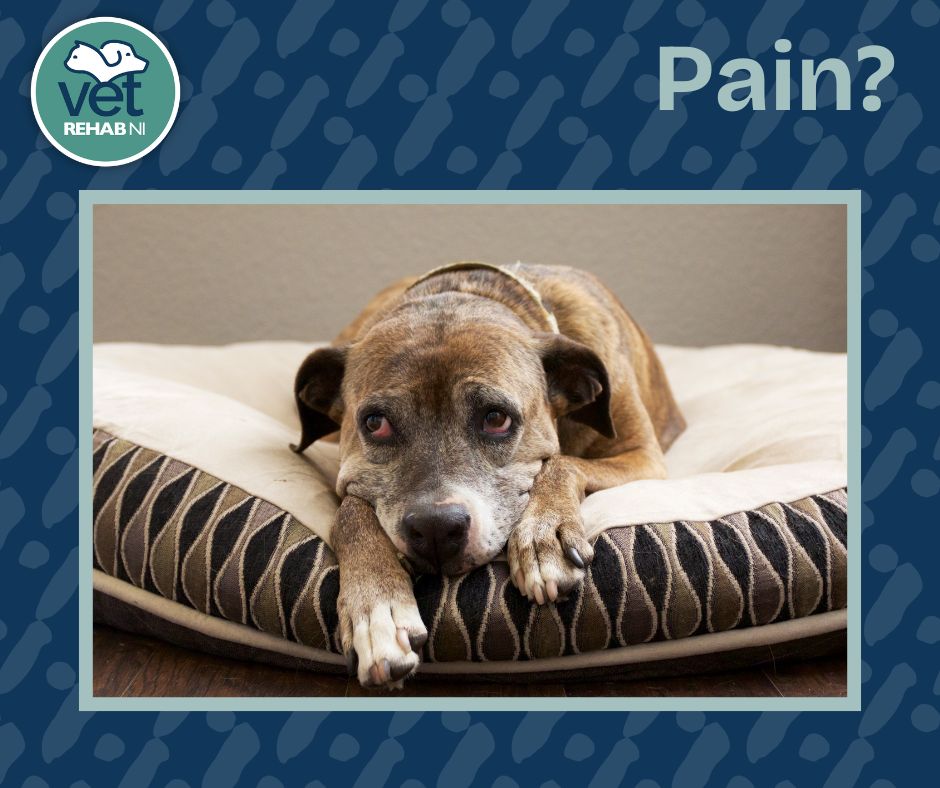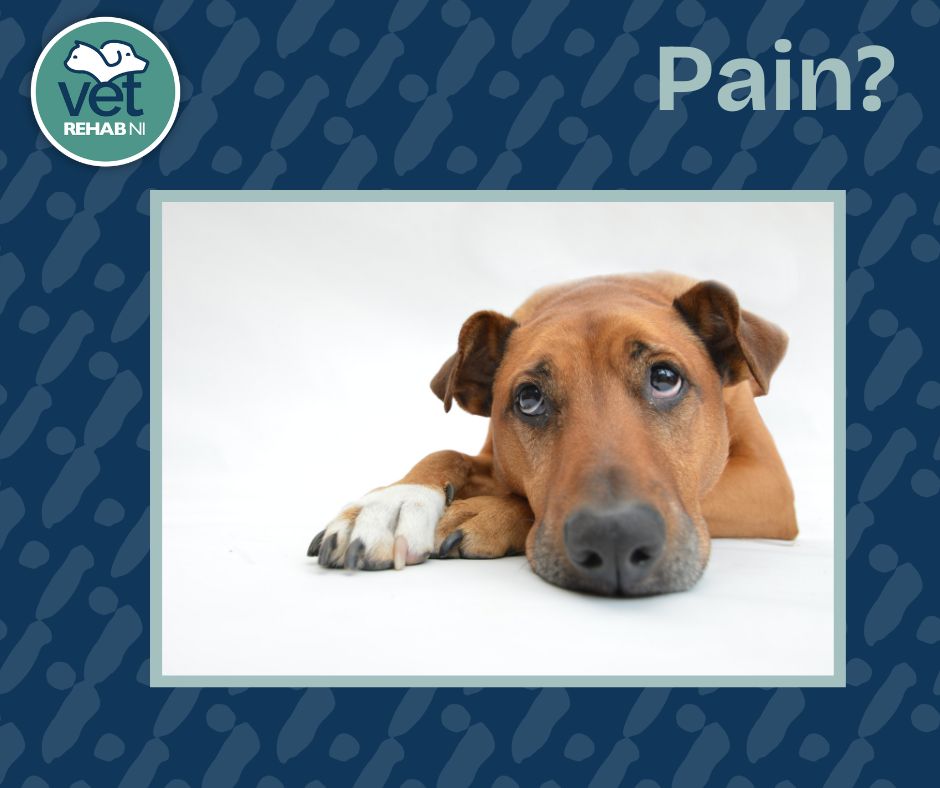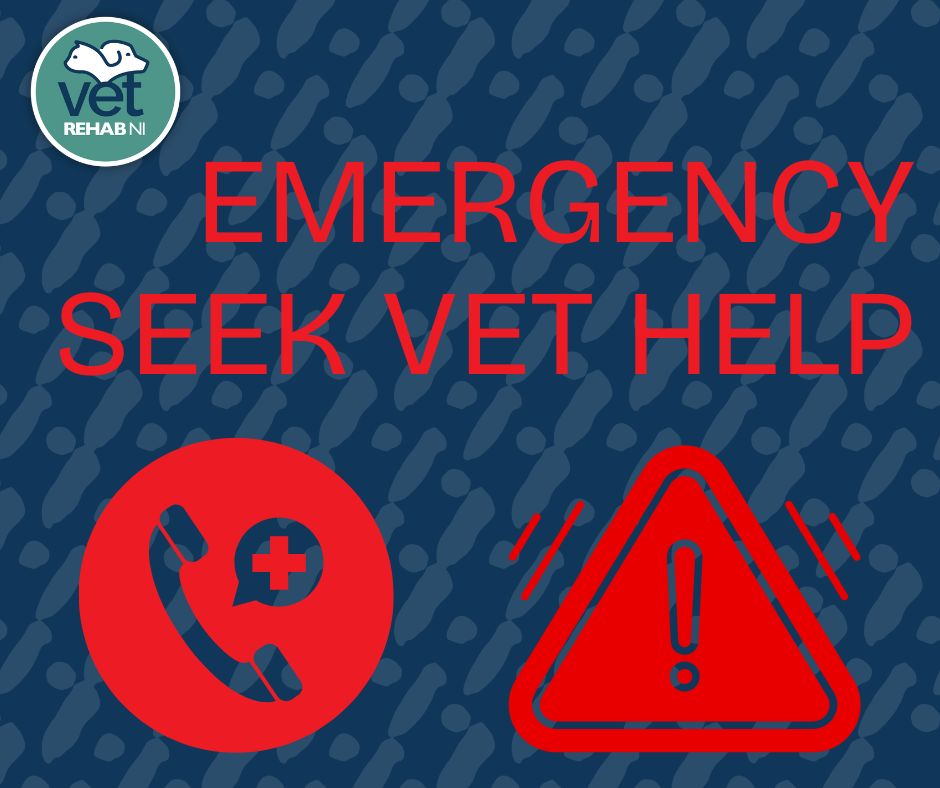
Pain? how will I know?
Spotting pain in our pets can be tricky since they often hide discomfort well. Here are some key signs to look for:
Behavioural Changes
- Restlessness or agitation — Pacing, unable to settle
- Aggression or irritability — Snapping or growling unexpectedly
- Withdrawal or hiding — Avoiding interaction or seeking solitude
- Changes in appetite — Loss of interest in food or treats
- Vocalization — Whining, whimpering, or yelping


Physical Signs
- Limping or favouring a limb — Even slight changes in gait can indicate pain
- Stiffness or reluctance to move — Hesitant to jump, climb stairs, or get up
- Trembling or shaking — Especially in specific body parts
- Licking, chewing, or biting — Focusing on a particular area
Posture & Body Language
- Arched back or tucked abdomen — Indicating abdominal discomfort
- Tail position changes — Tucked or held stiffly
- Pinned ears or furrowed brow — Signs of anxiety or pain


Breathing & Heart Rate
- Panting excessively — When not hot or stressed
- Increased heart rate — Often seen with acute pain
Other Indicators
- Changes in grooming — Avoiding self-care or overgrooming
- Eye changes — Squinting, redness, or glassy eyes
If you suspect your pet is in pain, here’s a step-by-step approach to ensure they get the care they need:
Observe and Document Symptoms
- Note changes in behaviour, posture, or movement.
- Track when the symptoms started, how severe they are, and any patterns.
- Video clips can be incredibly helpful for showing your vet what’s happening.
Minimise Movement
- Encourage your dog to rest. Avoid activities that could worsen the issue, especially jumping, running, or rough play.
Avoid Home Remedies or Medications Without Guidance
- Do not give human painkillers (like ibuprofen, etc.), as they can be toxic to dogs.
- Even over-the-counter pet medications should only be given with your vet’s guidance
Provide Comfort
- Create a calm, quiet environment.
- Use soft bedding and ensure they’re warm but not overheated.
- Gentle handling can help, but avoid touching areas that seem painful.
Contact Your Vet
- Describe the symptoms clearly and ask if an emergency visit is needed.
- Be ready to explain when the issue started, what you’ve observed, and any recent activities that may have triggered discomfort.

Emergency Situations
Seek urgent care if you notice:
- Difficulty breathing
- Sudden paralysis
- Uncontrolled bleeding
- Severe vomiting/diarrhoea
- Extreme agitation or unresponsiveness
